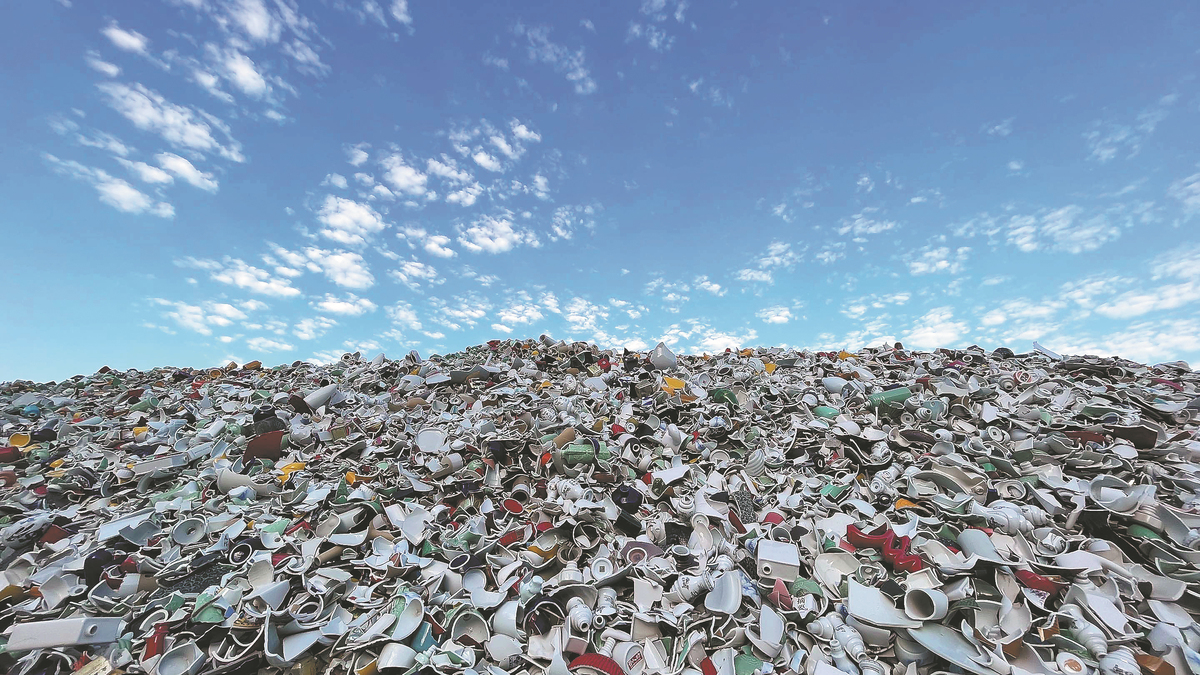Recycled products shatter old ideas about ceramic waste
New approaches, regulations ensure greener, cleaner industry
By ZHAO RUINAN in Jingdezhen, Jiangxi | China Daily | Updated: 2024-05-16 07:33

Ceramic 'mountains' cleared
In Chaozhou, Guangdong province, another major ceramic production city in China, steps have been taken in recent years to clean up waste problems.
Due to a wastage rate of 5 to 10 percent during the production process, the accumulation of "ceramic mountains" posed a significant problem for the city's ecology.
Chen Ruihong, deputy director of the city's Ecological Environment Bureau, said that there are over 10,000 ceramic factories in Chaozhou, most of which are small businesses.
"Ceramic waste was often dumped anywhere in the city. Waste disposal was done haphazardly, and nobody cared where it went," he said.
In 2017, Chaozhou officials established a waste disposal site and introduced special operations to address the problem. They also encouraged larger firms to upgrade their equipment and technology, and use market mechanisms to achieve breakthroughs in comprehensive recycling.
Within 12 months of taking action, Chaozhou had processed 67,000 tons of ceramic waste.
In 2018, the Ministry of Ecology and Environment released a nationwide regulation to establish a system of standards to control pollution emissions. In 2020, another document was issued that specified the basic principles, content, calculation methods, and requirements to strongly account for pollutant sources, including the manufacturing of ceramic products.
At the same time, large domestic ceramic production enterprises also stepped up their efforts to recycle ceramic waste. Chaozhou's ceramic waste recycling and disposal capacity now meets the needs of the entire city, officials said.
Oceano, a tile manufacturer with factories in Jingdezhen and Foshan, Guangdong, has been researching ways to recycle and utilize ceramics for a couple of years.
"At present, we have established a green recycling system in our factories, and most of the waste generated during production can be recycled internally for use as new building materials," said Rong Liang, deputy general manager of Oceano in Jingdezhen.
At its Jingdezhen factory, Oceano's annual output of ceramic building materials is about 22 million square meters, with a recycled ceramic reuse volume of about 40,000 tons.
In Foshan, the amount is about 5 million square meters, with a recycled ceramic reuse volume of about 10,000 tons.
To increase the recycling of ceramic waste, Wang, the professor, suggested implementing a "dual-cycle system" for handling waste.
Large ceramic production companies should prioritize internal recycling, where their waste can be treated and reused in production, in order to achieve zero emissions from ceramic waste, Wang said.
"On a larger scale, establishing a circular system for ceramic waste utilization within industrial parks where ceramic production companies are clustered can help consume ceramic waste internally," said the professor.
Local governments should also introduce more regulations, while the ceramics industry can promote green and low-carbon development, Wang said.
Achieving this goal not only saves energy and reduces emissions, but also helps spread the use of environmental protection technologies.
























